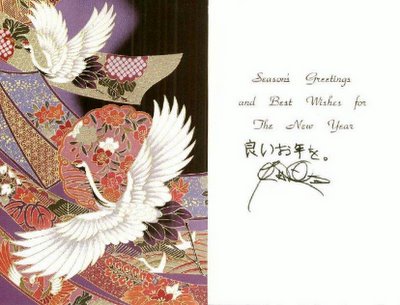
Here we are at the Houston Museum of Natural Science. Did you know that there are beavers in East Texas? The Texas beavers don't build dens like some other North American beavers - their dens are dug into the side of the creek. But they do have flat tails (I'm not referring to nutria here).
Anyway, they had a special exhibition on Egypt at the museum and they gave us 3D glasses to view it. See the photo behind Yebisu for an idea of how silly this was.
Hope you are enjoying the holidays and yoi otoshi wo (happy New Year). My New Year's card posted below has the same greeting in kanji on the card. The title of that posting is the greeting written in hiragana.
New Years is probably the most important holiday in Japan. At the end of the year, everyone cleans their house good inside and out. Special food is prepared that has a good "shelf life" so that everyone can enjoy the feast but not spend time cooking. New Year's eve is a time to get together with family and friends and maybe watch the holiday specials on TV.
The local temple will ring the bell 108 times to get rid of old sins before midnight. After midnight they will ring it 108 more times to ward them off in the New Year. Lots of people go the temple for food, a little ame-sake, prayer, and a good luck charm.
May you have a healthy, prosperous, and happy year in 2006...




